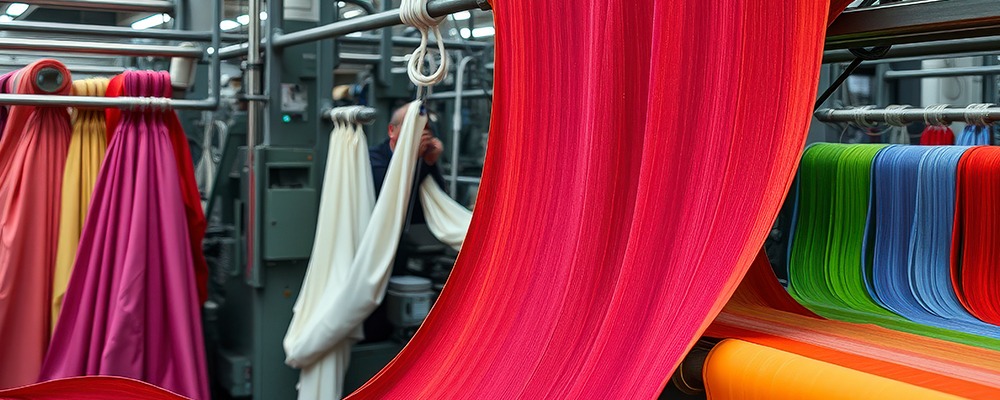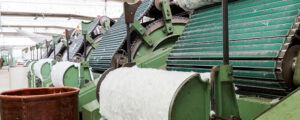Textiles are an integral part of our daily lives, from the clothes we wear to the fabrics that adorn our homes. The quality, vibrancy, and durability of textiles depend heavily on the processes they undergo during manufacturing. One such critical process is bleaching—an essential step to remove natural colour impurities, ensuring a clean base for dyeing. Traditional bleaching methods rely on harsh chemicals that can weaken fibres, harm the environment, and lead to inconsistent results. Fortunately, enzymatic textile bleaching has emerged as a revolutionary alternative, offering superior performance while being eco-friendly.
Enzymatic bleaching leverages the power of biological catalysts to enhance the brightness of fabrics without causing the damage associated with conventional methods. By understanding the science behind this process, we can appreciate its efficiency, sustainability, and role in shaping the future of textile manufacturing.
Understanding the Need for Bleaching in Textiles
Natural fibres like cotton contain various impurities, including pectins, waxes, and pigments, which can interfere with uniform dye absorption. Without effective bleaching, these impurities lead to dull, patchy, or inconsistent colouring, diminishing the aesthetic and commercial value of the fabric.
Historically, bleaching agents such as hydrogen peroxide (H₂O₂), sodium hypochlorite (NaOCl), and chlorine dioxide (ClO₂) have been used to eliminate these unwanted compounds. While effective, these chemicals often compromise fibre strength and produce toxic by-products that contribute to environmental pollution. The textile industry, therefore, has been actively seeking alternatives that maintain fabric integrity while reducing ecological impact. This is where enzymatic bleaching comes into play.
How Enzymatic Bleaching Works

Enzymatic bleaching harnesses specific enzymes to break down natural pigments and impurities in textiles, achieving a high level of whiteness with minimal fibre degradation. The enzymes used in this process, primarily laccases and peroxidases, operate under mild conditions and are highly selective in their action.
- Laccases: These enzymes, belonging to the oxidase family, facilitate the breakdown of phenolic compounds found in natural pigments. By catalysing oxidation reactions, laccases help eliminate colouration while minimising fibre damage.
- Peroxidases: Often used in combination with hydrogen peroxide, peroxidases enhance the efficiency of oxidation reactions. They work by accelerating the decomposition of hydrogen peroxide into reactive oxygen species, which then target and degrade colour-causing compounds in fibres.
Unlike chemical bleaching, which relies on strong alkaline conditions and high temperatures, enzymatic bleaching works efficiently at lower temperatures and neutral pH levels. This reduces energy consumption and prevents excessive fibre weakening, making it a more sustainable and gentle process.
Advantages of Enzymatic Bleaching
- Improved Fabric Strength and Longevity
One of the major drawbacks of conventional bleaching is its detrimental effect on textile strength. The aggressive chemical reactions often lead to fibre weakening, making fabrics more prone to wear and tear. Enzymatic bleaching, in contrast, preserves the natural structure of fibres, ensuring textiles retain their durability and softness.
- Enhanced Whiteness and Dye Absorption
Achieving a bright, even white base is crucial for high-quality dyeing. Enzymes work with precision to remove impurities, resulting in a superior level of whiteness. This uniform preparation enhances the ability of fabrics to absorb dyes evenly, leading to richer, more vibrant colours in the final product.
- Reduced Water and Energy Consumption
Traditional bleaching processes require extensive rinsing cycles to remove residual chemicals, significantly increasing water consumption. Additionally, the high temperatures needed for chemical bleaching contribute to excessive energy usage. Enzymatic bleaching minimises these requirements, operating efficiently at lower temperatures and reducing both water and energy waste.
- Eco-Friendly and Biodegradable
The environmental impact of textile production is a growing concern, with chemical bleaching being a major contributor to water pollution. Enzymatic bleaching presents a sustainable alternative, as enzymes are biodegradable and do not generate harmful residues. This makes wastewater treatment easier and significantly lowers the ecological footprint of the textile industry.
- Safer Working Conditions
The use of harsh chemicals in bleaching poses significant health risks to workers, including respiratory issues and skin irritation. Enzymatic processes eliminate the need for hazardous substances, creating a safer and more controlled working environment for textile industry employees.
Application of Enzymatic Bleaching in Different Textile Segments

- Cotton and Natural Fibres
Cotton is one of the most commonly bleached textiles due to its widespread use in apparel and home furnishings. Enzymatic bleaching offers a gentle yet effective solution for cotton, ensuring brightness without fibre damage. It also improves cotton’s moisture retention properties, enhancing its comfort and breathability.
- Wool and Silk
Delicate fibres like wool and silk require extreme care during processing. Chemical bleaching can severely weaken these fibres, leading to shrinkage and reduced fabric lifespan. Enzymes provide a controlled bleaching alternative, preserving the softness and integrity of luxury textiles.
- Synthetic Blends
Blended fabrics, which combine natural and synthetic fibres, pose unique challenges in bleaching due to their varied composition. Enzymatic bleaching can be tailored to suit different fibre blends, optimising results without the risk of over-processing.
Challenges and Future Prospects
While enzymatic bleaching offers numerous advantages, its adoption across the textile industry has been gradual due to factors such as cost and process optimisation. Enzymes can be sensitive to fluctuations in pH and temperature, requiring precise process control to achieve consistent results. Additionally, the initial investment in enzymatic technology may be higher than traditional methods, though long-term savings in energy, water, and fabric durability often outweigh these costs.
Ongoing research in enzyme engineering aims to develop more robust and efficient enzymatic solutions that can operate under a wider range of conditions. Advances in biotechnology are also enabling the customisation of enzyme formulations to cater to specific fabric types and industry requirements. As awareness of sustainability grows, enzymatic bleaching is poised to become the preferred choice for forward-thinking textile manufacturers.
Conclusion
As the textile industry moves towards greener and more responsible manufacturing practices, enzymatic bleaching stands out as a game-changer. By offering a safer, more sustainable alternative to chemical bleaching, this technology ensures that textiles not only look brighter but also last longer. The benefits extend beyond fabric quality to environmental conservation, reduced resource consumption, and improved working conditions. For businesses aiming to balance efficiency with eco-consciousness, enzymatic bleaching presents an optimal solution.
At Biolaxi Enzymes, we are committed to advancing enzymatic innovations for the textile industry. Our specialised enzyme formulations are designed to deliver superior bleaching performance while aligning with sustainability goals. With a focus on quality, reliability, and innovation, Biolaxi continues to be a trusted partner for textile manufacturers seeking high-performance enzymatic solutions. Let us help you achieve brighter, better, and more environmentally friendly textiles with cutting-edge enzyme technology.




